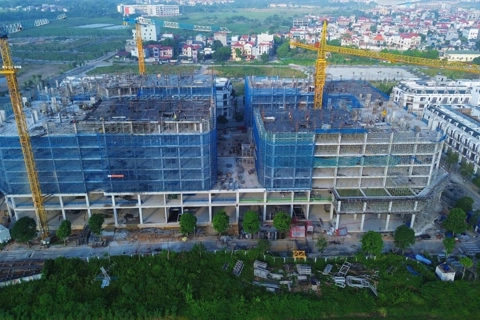Hanoi intensifies QR code-embedded land use rights
The decision to embed a QR code on the land use rights certificate demonstrates Hanoi's commitment to administrative reform and digital transformation for better public services.
THE HANOI TIMES — Since the start of 2025, the city’s Department of Agriculture and Environment has issued more than 68,000 land use right certificates integrated with QR codes.

A family obtains their land use right certificate. Photo: Hanoimoi Newspaper
This is a significant step in modernizing land management under the 2024 Land Law.
Integrating QR codes is a stride toward comprehensive digital transformation in the fields of natural resources and the environment, providing convenience for government agencies and citizens alike.
It supports the creation of a unified, transparent land database and contributes to the development of e-government and smart urban management.
Users can access five key categories of information by scanning the QR code: land user or asset owner; land parcel details; assets attached to the land; land and asset graph; and notes or changes related to the property.
The QR code feature helps prevent document forgery and information loss, while streamlining transactions such as sales, transfers, and mortgages.
Stakeholders can quickly verify the legal status of land through the national land database system, safeguarding their lawful rights and simplifying administrative procedures.
Moreover, QR codes reduce reliance on physical documents, protect the environment, and lower costs.
For the rollout of title deeds embedded with QR codes, the national cadastral authorities have been converting and standardizing massive amounts of data covering millions of land parcels from outdated systems to the new centralized database.
This process requires a huge amount of technical manpower to ensure the accuracy of the information stored in each QR code, as well as a change in mindset, since cadastral officers are accustomed to handling procedures based on the old certificate format.
Cadastral officers have undergone intensive, time-consuming training to adapt to new digital workflows and technical requirements. This has increased the workload in districts with high volumes of applications. Moreover, managing both the old and new certificate formats in parallel has led to administrative and legal verification difficulties during the transition.











